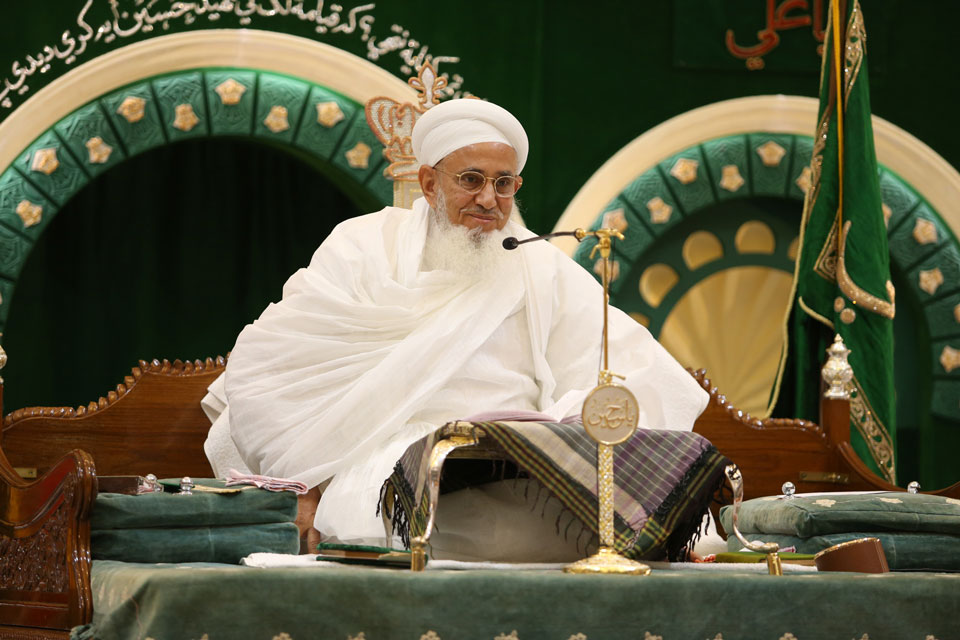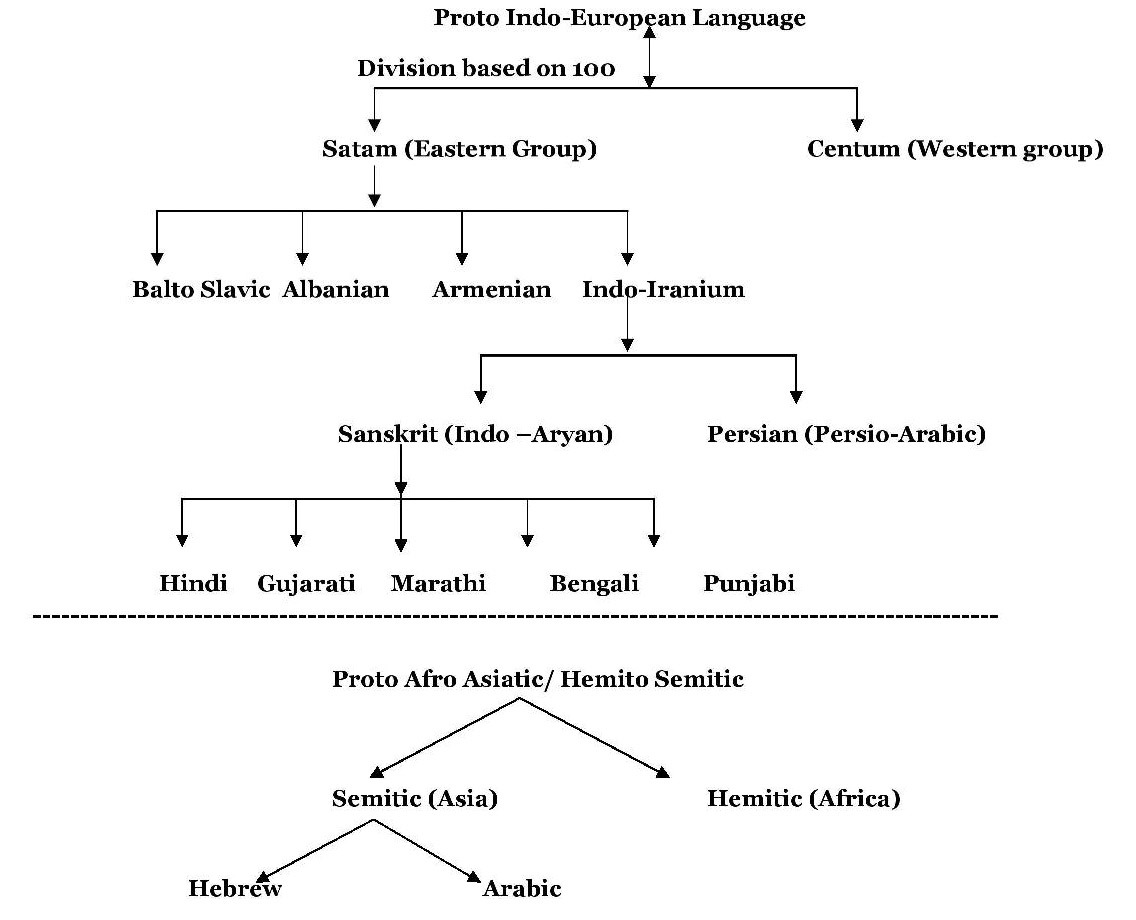|
Moulana Abdeali Saifuddin
Abdeali Saifuddin was the 43rd Da'i al-Mutlaq of the Dawoodi Bohra. He was the son of 41st Da'i al-Mutlaq Abduttayyeb Zakiuddin III and the brother of the 42nd Da'i al-Mutlaq Syedna Yusuf Najmuddin. He was a Dai, scholar and poet and one of the most venerated Dawoodi Bohra Dai's. Life He was born on 9 Safar 1188 Hijri (20 April 1774 AD), succeeded the 42nd Da'i al-Mutlaq on 18 Jumada al-Thani 1213 Hijri (28 October 1798 AD), and died on 12 Dhu al-Qi'dah 1232 Hijri (23 September 1817 AD) and is buried in al-Qubbah al-Najmiyah in Surat. He was only twelve when his father died. He was then brought up by his elder brother Syedna Yusuf Najmuddin in Surat. Syedna Najmuddin himself was a great scholar. He trained and educated Abde Ali Saifuddin in the tradition and learning that was the treasured inheritance of the Fatimid-Ismaili community. The era of Syedna Abde Ali Saifuddin was witness to intense intellectual activity. Many scholars were actively involved in the spread of know ... [...More Info...] [...Related Items...] OR: [Wikipedia] [Google] [Baidu] |
List Of Dai Of Dawoodi Bohra
This is a list of Dai of the Dawoodi Bohra. The Dawoodi Bohra are a sect of Shia Islam, whose leader is the Dai. According to Fatimid (Taiyabi, Mustali, Ismaili) tradition, after the death of Imām Al-Amir, Arwa al-Sulayhi, al-Malika al-Sayyida (Hurratul-Malika) instituted the Da'i al-Mutlaq to run the da'wah from Yemen in the name of Imām Taiyab abi al-Qasim. This article gives short history and the list of the Dawoodi Bohra Dā'īs, their Mawazeen/Mukasir (associates) and The Walī-ul-Hind (Indian Walīs) ("representatives" or "caretakers" when the Dais were seated at Yemen).Ismaili their history and doctrine Farhad Daftary - 1992 - Short History The Dā'īs Arwa al-Sulayhi, Al-Malika al-Sayyida (Hurratul-Malika ...[...More Info...] [...Related Items...] OR: [Wikipedia] [Google] [Baidu] |
Taher Saifuddin
Taher Saifuddin (4 August 1888 – 12 November 1965), also known as Tahir Sayf al-Din, was the 51st and longest serving Da'i al-Mutlaq of the Dawoodi Bohras. Saifuddin adapted the modernisation in Western and European ideas, and established its benefits for the Bohras, whilst still steeped in the traditions and the culture of the community's Fatimid heritage. Saifuddin laid substantial groundwork in terms of philanthropy, education, entrepreneurship, social outreach, political outreach, and community upliftment upon which his successors continued to build, resulting in an unprecedented era of prosperity among the Dawoodi Bohras. Early life Taher Saifuddin was born to Mohammed Burhanuddin I and Amatullah Aaisaheba on 4 August 1888 in Surat, British India (present day the state of Gujarat). Da'i al-Mutlaq Saifuddin became the 51st al-Dāʿī al-Mutlaq in the year 1915 at the age of 28. During his reign, he rebuilt and repaired many monuments of the Fatimid Imams, al-Dā ... [...More Info...] [...Related Items...] OR: [Wikipedia] [Google] [Baidu] |
1775 Births
Events Summary The American Revolutionary War began this year, with the first military engagement on April 19 Battles of Lexington and Concord on the day after Paul Revere's ride. The Second Continental Congress took various steps toward organizing an American government, appointing George Washington commander-in-chief (June 14), Benjamin Franklin postmaster general (July 26) and creating a Continental Navy (October 13) and a Marine force (November 10) as landing troops for it, but as yet the 13 colonies have not declared independence, and both the British (June 12) and American (July 15) governments make laws. On July 6, Congress issues the Declaration of the Causes and Necessity of Taking Up Arms and on August 23, King George III of Great Britain declares the American colonies in rebellion, announcing it to Parliament on November 10. On June 17, two months into the colonial siege of Boston, at the Battle of Bunker Hill, just north of Boston, British forces are vic ... [...More Info...] [...Related Items...] OR: [Wikipedia] [Google] [Baidu] |
Dawoodi Bohra Da'is
Dawoodi may refer to: * Dawoodi Bohra The Dawoodi Bohras are a religious denomination within the Ismā'īlī branch of Shia Islam. They number approximately one million worldwide and have settled in over 40 countries around the world. The majority of the Dawoodi Bohra community re ..., a denomination of the Ismā’īlī branch of Shia Islam * Dawoodi language, an Indo-Aryan language spoken by the Domaa community in Gilgit-Baltistan, Pakistan See also * Dawood * * {{disambiguation ... [...More Info...] [...Related Items...] OR: [Wikipedia] [Google] [Baidu] |
Dā'ī Al-Mutlaq
(; pl. , ) is the most senior spiritual rank and office in Tayyibi Isma'ilism. The Da'i al-Mutlaq has headed the Tayyibi community since the seclusion of the 21st Tayyibi Imam, at-Tayyib Abu'l-Qasim, traditionally placed in 528 AH/1134 AD. According to Tayyibi Isma'ili tradition, in the Imam's absence, the Da'i al-Mutlaq is the faith's highest authority; i.e., the Da'i al-Mutlaq holds the same authority as the Imam. Before the seclusion of al-Tayyib, the Da'i al-Mutlaq operated under the direct orders of the Imam and his trusted associates in regions where Isma'ili faithful were present, either living openly propounding their faith, or secretly due to fear of persecution. In Yemen, after the 21st Tayyibi Imam went into seclusion, the Da'i was given the authority of Itlaaq (إطلاق), or free conduct, and absolute religious and social authority, under the governing principles of the Tayyibi Isma'ili faith. His command is regarded as a final decree and his conduct infallible ... [...More Info...] [...Related Items...] OR: [Wikipedia] [Google] [Baidu] |
Lisan Al-Dawat
Lisaan ud-Da'wat or ''Lisaan o Da'wat il Bohra'' or ''Lisan ud-Dawat'' (, ''da'wat ni zabaan''; abbreviated LDB) is the language of the Dawoodi Bohras and Alavi Bohras, a Isma'ili Shi'a Muslim communities primarily in Gujarat, following the Taiyebi doctrines and theology."Taiyebi" refers to the 21st Imam at-Taiyeb from the progeny of Lady Fatimah, the daughter of Prophet Mohammmad. After the seclusion of at-Taiyeb, the doctrines that emerged and propagated by his missionaries in Yemen is followed by Bohra communities of Gujarat The language is based on a Neo-Indo-Aryan language, Gujarati, but incorporates a heavy amount of Arabic, Urdu, and Persian vocabulary and is written in the Arabic script '' naskh'' style. Originally a ritual language, since the period of the missionaries () in Ahmedabad around 1005 AH/1597 AD it has also been propagated as the vernacular language for members of the Bohra communities, but the version used by their religious leader-''Saiyedna'' and his a ... [...More Info...] [...Related Items...] OR: [Wikipedia] [Google] [Baidu] |
Al Jamea Tus Saifiyah
Aljamea-tus-Saifiyah is an Arabic academy dedicated to Islamic learning based in India, Pakistan, and Kenya. Established in Surat as ''Dars-e Saifee'' by Abde'Ali Saifuddin, it was after extensive renovation () and expansion ( and ) carried out by Taher Saifuddin and Mohammed Burhanuddin, the university gained prominence. Today, as holder of the office of Dāʿī al-Mutlaq, Mufaddal Saifuddin is the sole benefactor of the institute. History Syedna Abdeali Saifuddin established ''Dars-e Saifee'' (), a theology school for the Dawoodi Bohra community, in 1810. The 51st Dai al-Mutlaq, Taher Saifuddin introduced secular and scientific subjects in the and gave it the present name of Aljamea-tus-Saifiyah, and admitted its first female students. Mohammed Burhanuddin undertook a complete renovation and expansion of the campus buildings. In 1969, during his 57th birthday celebration, Mohammed Burhanuddin established Aljamea-tus-Saifiyah in Karachi, Pakistan. The construction of ... [...More Info...] [...Related Items...] OR: [Wikipedia] [Google] [Baidu] |
Diwan (poetry)
A diwan (from Persian language, Persian ; ) is a collection of Poetry, poems by a single author – usually excluding the poet's Mathnawi (poetic form), long poems – in Islamic cultures of West Asia, Central Asia, North Africa, Sicily and South Asia. The vast majority of Diwan poetry was Lyric poetry, lyric in nature: either ghazals (or ''gazel''s, which make up the greatest part of the repertoire of the tradition) or ''kasîde''s. There were, however, other common genres, most particularly the ''mesnevî''—a kind of Courtly romance, verse romance and thus a variety of narrative poetry; the two most notable examples of this form are the ''Layla and Majnun'' (ليلى و مجنون) of Fuzûlî and the ''Hüsn ü Aşk'' (حسن و عشق – 'Beauty and Love') of Şeyh Gâlib. Originating in Persian literature, the idea spread to the Arab, Turkic and Indic worlds, and the term was sometimes used in Europe, albeit not always in the same way. Etymology The English usage of t ... [...More Info...] [...Related Items...] OR: [Wikipedia] [Google] [Baidu] |
Syedna Mohammed Burhanuddin
Mohammed Burhanuddin (6 March 1915 – 17 January 2014) was the 52nd Da'i al-Mutlaq of Dawoodi Bohras from 1965 to 2014. He led the community for 49 years in a period of social, economic, and educational prosperity; strengthened and re-institutionalized the fundamental core of the community's faith; revived its culture, tradition, and heritage. In successfully achieving coexistence of traditional Islamic values and modern Western practices within the community, Burhanuddin completed the work his predecessor Taher Saifuddin had started. Burhanuddin was presented the highest national civilian honors of the states of Egypt and Jordan recognising his revivalism and restoration efforts. He was known in Arab countries as ''Azamat us-Sultan'' (). Owing to extensive travels for community reach-out, he was the first ''Dā'ī al-Mutlaq'' to visit Europe, Australia, and America. Life Early life Burhanuddin was born to Taher Saifuddin and Husaina Aaisaheba in Surat in the Indian stat ... [...More Info...] [...Related Items...] OR: [Wikipedia] [Google] [Baidu] |
Da'wah
' (, , "invitation", also spelt , , , or ) is the act of inviting people to Islam. The plural is () or (). Preachers who engage in dawah are known as da'i. Etymology literally means "issuing a summons" or "making an invitation". Grammatically, the word represents a gerund of a verb with the triconsonantal root ''d-ʕ-w'' () meaning variously "to summon" or "to invite". A Muslim who practices , either as a religious worker or in a volunteer community effort, is called a ' (, plural ' ). A , is a person who invites people to understand and accept Islam through dialogue and other techniques, who may be regarded as a missionary inviting people to the faith, prayer, and manner of Islamic life. Early Islam The term ''daʿwah''[Qur'an. In ''sura'' (chapter) 30:25, for example, it denotes the call to the Resurrection of the dead, dead to rise on the Day of Judgment. When used in the Qur'an, it generally refers to Allah's invitation to live according to His will. Thus, when ... [...More Info...] [...Related Items...] OR: [Wikipedia] [Google] [Baidu] |
Isma'ilism
Ismailism () is a branch of Shia Islam. The Isma'ili () get their name from their acceptance of Imam Isma'il ibn Jafar as the appointed spiritual successor (Imamate in Nizari doctrine, imām) to Ja'far al-Sadiq, wherein they differ from the Twelver Shia, who accept Musa al-Kazim, the younger brother of Isma'il, as the Imamah (Shia doctrine), true Imām. After the death of Muhammad ibn Isma'il in the 8th century CE, the teachings of Ismailism further transformed into the belief system as it is known today, with an explicit concentration on the deeper, esoteric meaning () of the Islamic religion. With the eventual development of Usulism and Akhbarism into the more literalistic () oriented, Shia Islam developed into two separate directions: the metaphorical Ismaili, Alevism, Alevi, Bektashi Order, Bektashi, Alians, Alian, and Alawites, Alawite groups focusing on the mysticism, mystical path and nature of God in Islam, God, along with the "Imam of the Time" representing the mani ... [...More Info...] [...Related Items...] OR: [Wikipedia] [Google] [Baidu] |







